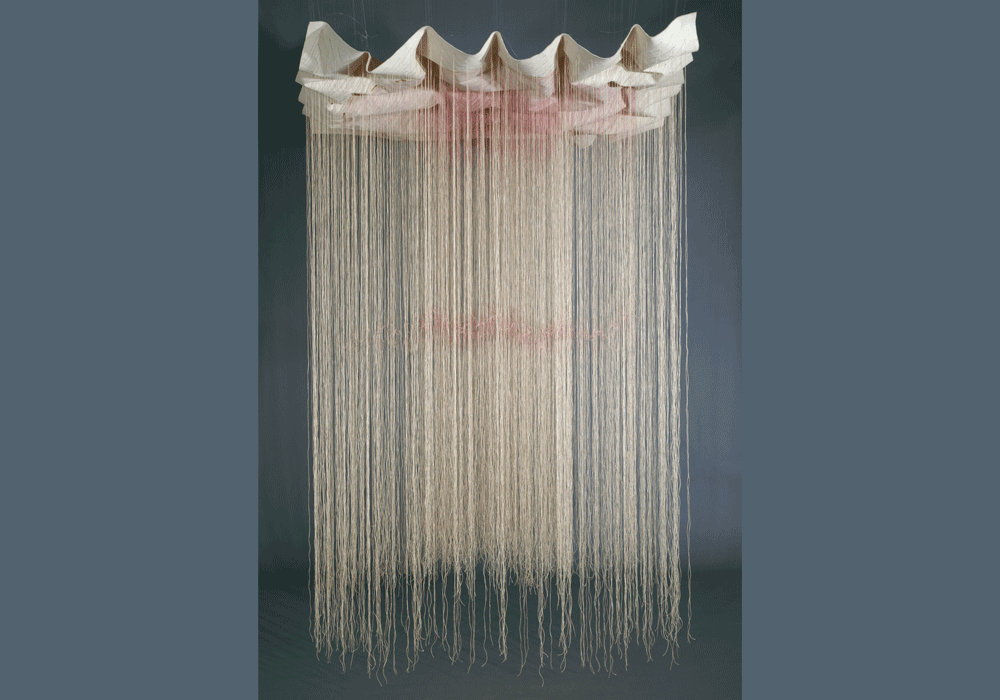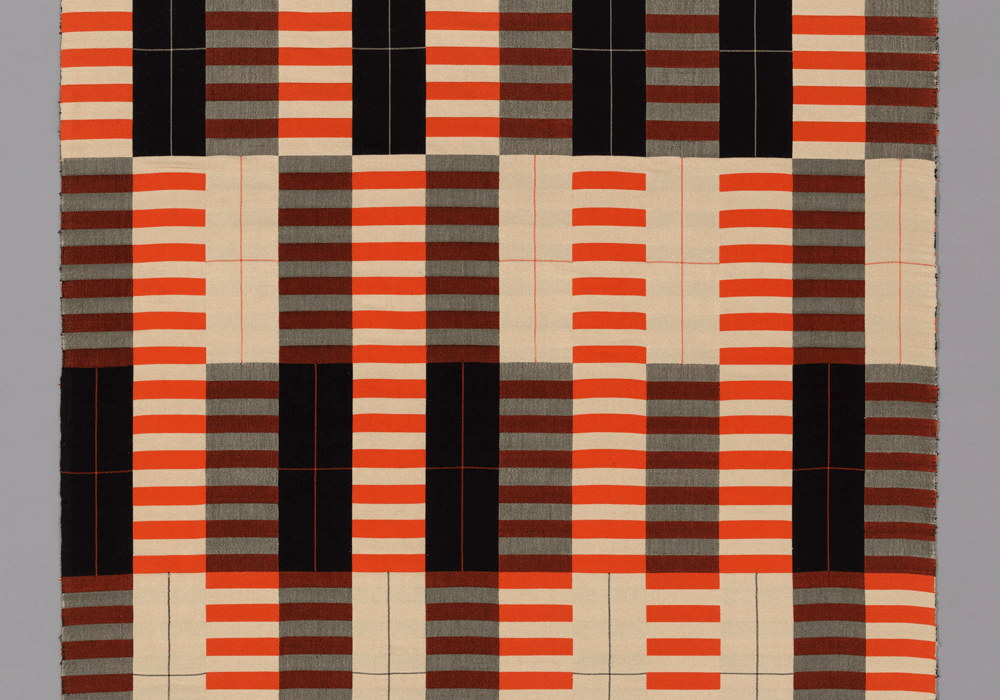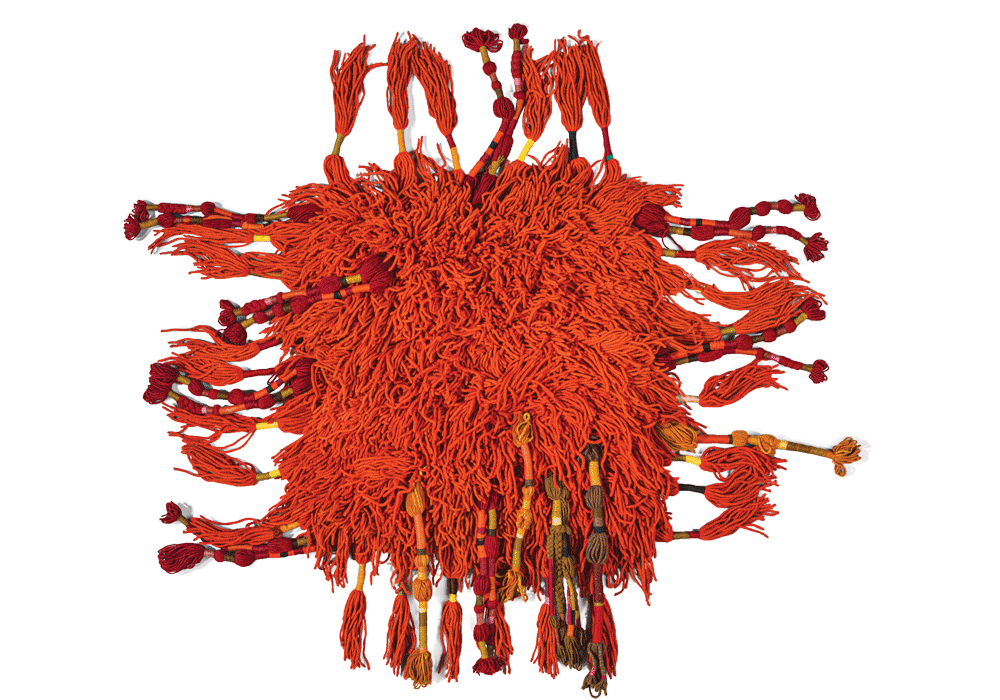Weaving beyond the Bauhaus, Art Institute of Chicago
This is the last month to see the exhibition ‘Weaving beyond the Bauhaus’ at the Art Institute of Chicago, in Chicago, closing on 17 February 2020. The following is an abridged version of the exhibition review by Thomas Connors from HALI 201:
‘The Bauhaus is everywhere in this centenary year, with new museums in Weimar and Dessau and exhibits across the globe examining the history of the school and the diaspora that followed the rise of National Socialism. Not surprisingly, many of these exhibitions focus on the men of the Bauhaus and the architectural aesthetic they developed.
One excellent exception was ‘4 “Bauhausmädels”’ at the Angermuseum in Erfurt, Germany, which celebrated the work of Gertrud Arndt, Marianne Brandt, Margarete Heymann and Margaretha Reichardt. That presentation and its accompanying catalogue rehearsed most informatively the post-Bauhaus careers of its subjects. ‘Weaving Beyond the Bauhaus’, on view at the Art Institute of Chicago, gives another group of women their due.
Organised by the museum’s Assistant Curator of Textiles, Erica Warren, the exhibition includes work by the Bauhäusler Anni Albers, Otti Berger and Gunta Stölzl, along with pieces by Claire Zeisler and Lenore Tawney, who studied under Marli Ehrman in Chicago at the New Bauhaus (now the Illinois Institute of Technology), founded by László Moholy-Nagy in 1937. A tight presentation numbering 50 pieces, the show ranges from the functional (upholstery and clothing fabrics) to the plainly artistic (including Zeisler’s arguably iconic Private Affair I of 1986).
Experimentation and improvisation with both structure and materials were the central occupation of the Bauhaus. In the weaving workshop, this included fashioning lightweight gauze weaves or incorporating cellophane, rayon, and Lurex (a plastic-coated metal fibre from DuPont). Interestingly, most of the early designs on view stick to earth-tones and shades of blue, which makes Albers’ Black-White-Red—a silk and cotton, plainweave double-cloth of paired warps and wefts—almost eye-popping. The slightly irregular arrangement of its stripes and rectangles adds to its visual dynamism.
Albers, who along with her husband, the painter Josef Albers, became a pedagogical force at the progressive Black Mountain College in North Carolina, was, of course, artistic godmother to many, including American-born Sheila Hicks, represented by several pieces in the exhibition, including a wonderfully critter-like rug done in wool latch-hooked pile, braided and wrapped in wool.
Speaking of Albers for an oral history conducted for the Smithsonian Archives of American Art, Hicks remarked, ‘Anni had helped me to think about structure. There’s a basic structure to everything. Biologists know this, but artists don’t necessarily see this right away.’

The Bride Has Entered, Lenore Tawney, 1982. Art Institute of Chicago, Gift of Lenore Tawney; restricted gift of the Textile Society, Joan G. Rosenberg, Mr. and Mrs. Richard J.L. Senior, Mrs. William G. Swartchild Jr., and Mrs. Theodore D. Tieken
Albers was also, Hicks noted, ‘weaving textiles that didn’t appear to be utilitarian’. And it is the non-utilitarian—the conceptual, the expressive—that most draw the eye here. Ethel Stein’s White Pinwheel (1990) is typical of her canvas-like weavings of geometric forms, images that toy with depth and dimension. A multi-dimensional silk and wool hanging by Zeisler, that features tassels, sequins and a glass ball, reads like a Rauschenberg combine—a kind of wonderful mess. Tawney’s The Bride Has Entered (1982) comprises a screen of wispy tendrils depending from a chuppah-like canopy. The inner strands are arranged in a cylindrical format, the outer ones in a more linear, cube-like fashion. The convolutions of the canopy and the trace of pink pigment that colours it and the inner strands suggest an allusion to female biology and anatomy. Formally, the piece registers as both solid mass and insubstantial transparency.

























Comments [0] Sign in to comment